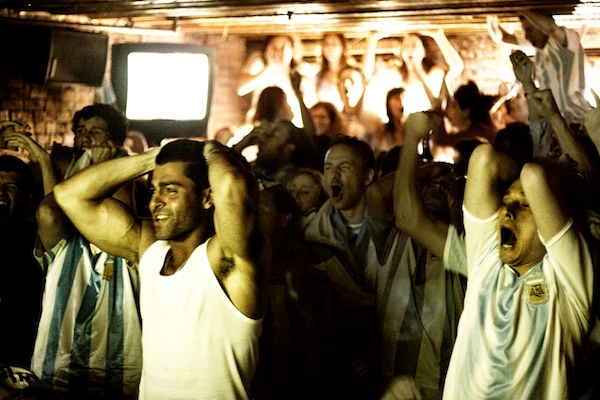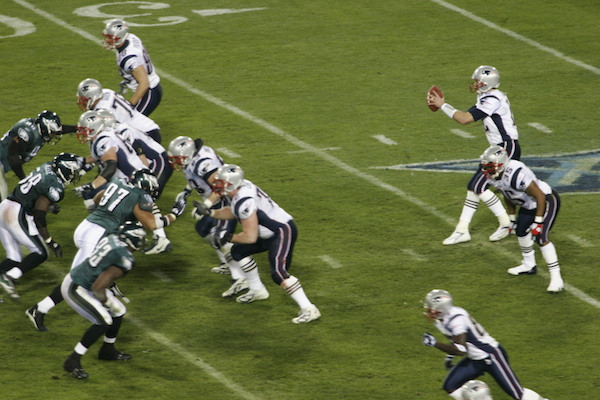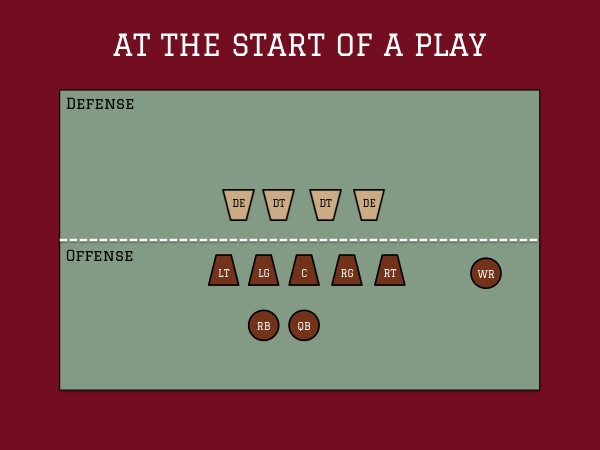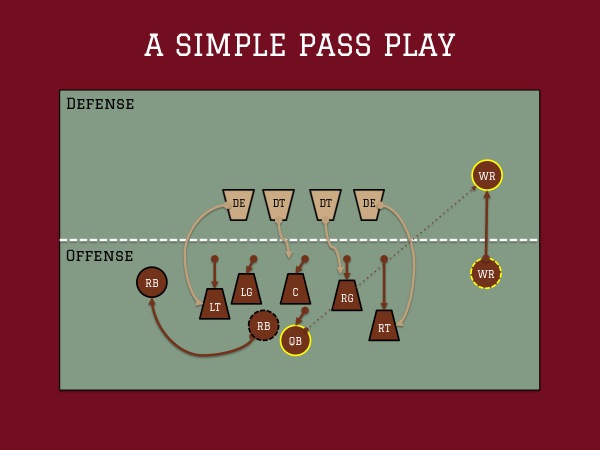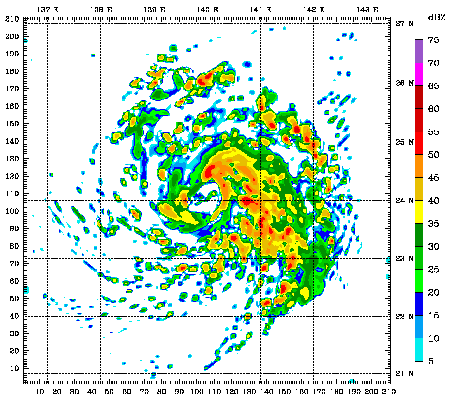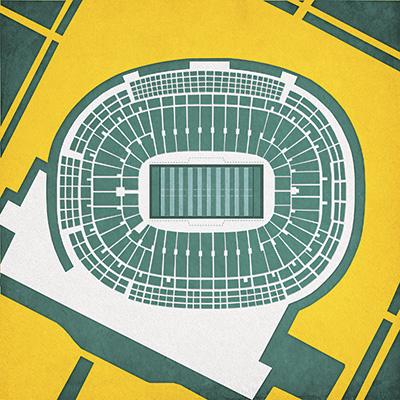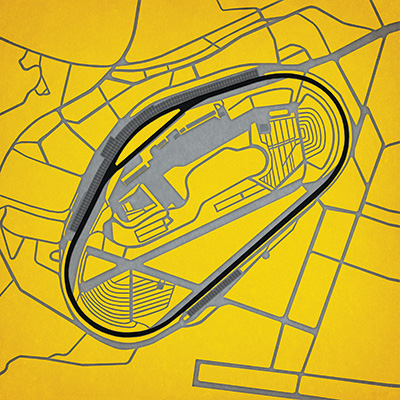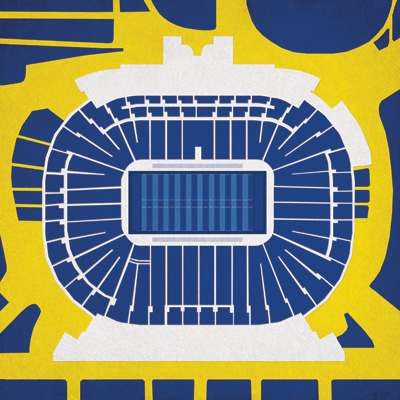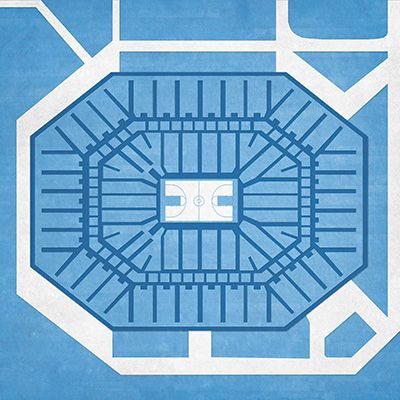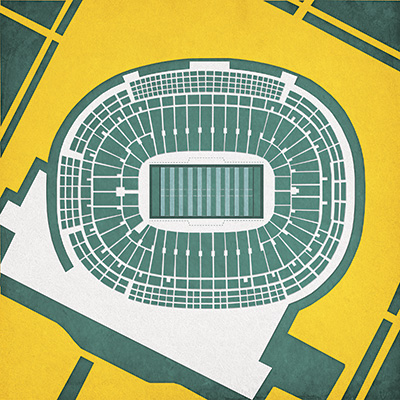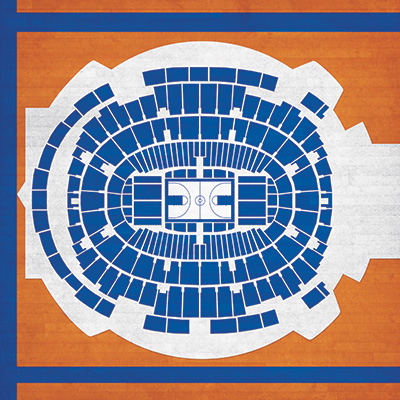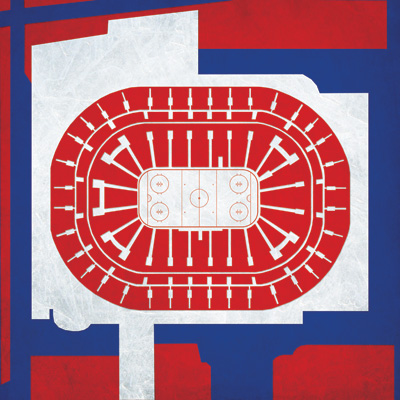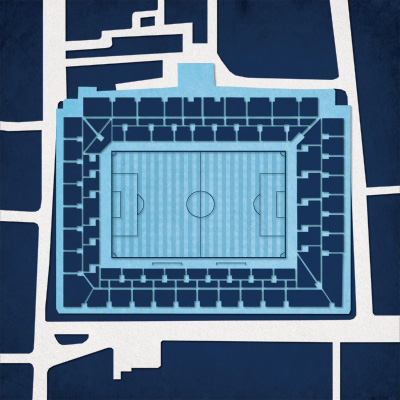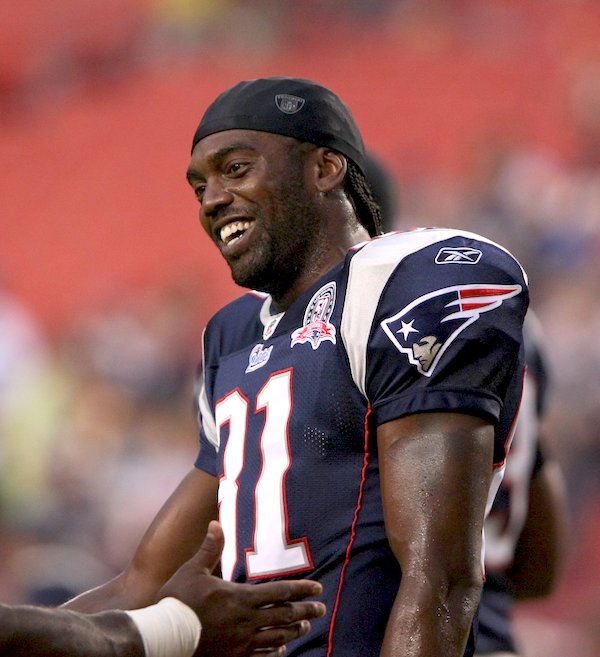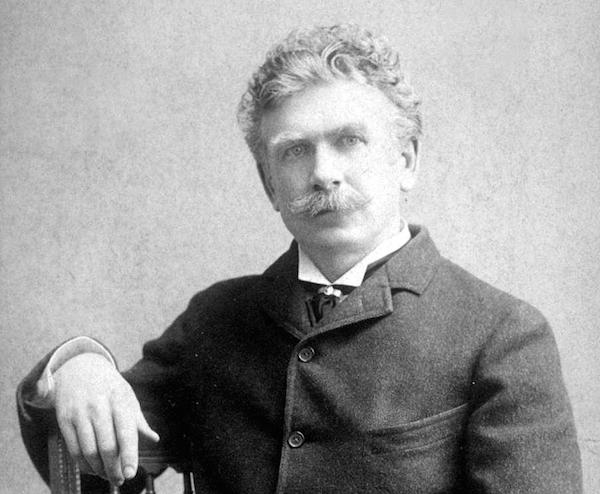- Goalie gets offensive: It’s very rare in NHL hockey for a goalie to score a goal. It happens only once every decade or so when a goalie takes a shot at the opposing team’s empty net. More frequent but still rare is the goalie assist. San Jose Sharks goalie Antii Niemi got an assist last night in the Sharks 2-1 win over the Tampa Bay Lightning.
Line: Goalie assists are like when a pitcher hits a home run in baseball — unusual and fun. - Past beats future, present beats the Nets: The Chicago Bulls, whose chance to win a championship may be in the rear-view mirror thanks to Pau Gasol’s age and Derrick Rose’s inability to stay healthy, beat the young, up-and-coming, Toronto Raptors 100-93 in Toronto. Meanwhile, over in California, a team built to win now, the Golden State Warriors beat the visiting Brooklyn Nets 107 to 99. Could be some of my own fan’s pessimism, but I don’t the Nets are built to do much of anything this year… or any year in the foreseeable future.
Line: The Bulls beat the Raptors but Derrick Rose hurt himself again. That’s like three injuries in twelve games. - High scoring college football games: In the two featured college football games last night, there were a total of 168 points scored! That’s a lot. The Cincinnati Bearcats beat the East Carolina Pirates 54-46 and the USC Trojans beat the California Golden Bears 38-30.
Line: I can almost guarantee that those were two of the five best college football games this weekend. Shame I missed them! - A throwback NFL game: The Miami Dolphins beat the Buffalo Bills last night in a game that looked, at times, like football from 20 or 40 years ago. For the entire first half and a good portion of the second, no one scored a touchdown. It wasn’t bad offense, just really good defense, so this was enjoyable to watch. Then, in the third quarter, the Dolphins finally broke through on offense, scoring a touchdown, and on defense where they scored a safety after pressuring Bills quarterback Kyle Orton to take an intentional grounding penalty in his own end-zone.
Line: I love watching that type of throwback football where the defenses dominate the game.
Do Not Watch This Game 11.15.14 Weekend Edition
For sports fans, the weekend is a cornucopia of wonderful games to watch. This is particularly true in the fall with its traditional pattern of College Football on Saturday and NFL Football on Sunday and Monday. As the parent, child, girlfriend, boyfriend, partner, husband, wife, roommate, or best friend of a sports fan, this can be a challenge. It must be true that some games are more important to watch than others but it’s hard to know which is which. As a sports fan, the power of habit and hundreds of thousands of marketing dollars get in the way of remembering to take a break from sports and do something with your parent, child, girlfriend, boyfriend, partner, husband, wife, roommate, or best friend. To aid all of us in this, and just because it’s fun, I’m going to write a weekly post highlighting a single game that is ideal for skipping. Use this to help tell yourself or someone else: “Do not watch this game!”
Monday, 8:25 p.m. ET, NFL Football, Pittsburgh Steelers at Tennessee Titans. It’s on ESPN but do not watch this game!
Sports pundits never tire of telling you that the NFL is the most unpredictable professional sports league out there. “ANY GIVEN SUNDAY” they shout at each other on TV even though they’re seated mere feet from each other and mic’d with thousands of dollars worth of high-end audio technology. They’re right, of course, one of the reasons professional football is so exciting is that it is very difficult to predict what will happen over the course of a season. For one thing, the fact that teams only play sixteen times each year means that anyone trying to predict what will happen has a very small sample size to work with. Then there’s the sheer number of people on each team who have a major impact on the outcome of the game (~25 in football compared to 11 in soccer, 7 in basketball, or 1 in any baseball game involving Madison Bumgarner…) Add to that the revolving door created by constant injuries to major players, mix in the greater impact that coaches have on the game, and you end up with a truly unpredictable sport.
That said, the Titans have no chance to beat the Steelers on Monday. Look. I mean, of course they have some chance but it just doesn’t seem all that likely. The Steelers are a good team that’s prone to very bad losses. They provided the Tampa Bay Buccaneers with their only victory this year. Tennessee is better than Tampa Bay but their timing is not nearly as good. Because, you see, the Steelers just had one of those bad losses last weekend when they lost 20-13 to the blundering New York Jets. Following losses this year, the Steelers are 3-0. Again, a very small sample, especially for a team that wins most of its games, but it’s a little more compelling when compared to the Titans record after losses this year: 1-5. All but three of the Titans games this year have been after a loss… because they’ve lost almost all their games.
Quarterback is the most important position in football and often a good short-hand for figuring out if a game is worth watching. The Steelers quarterback is a two time pro-bowler, Ben Roethlisberger, having one of the best years of his career. The Titans quarterback is a dude named Zach Mettenberger, known in part for posting and then being taunted for having posted a selfie before his first start this year. He’s started exactly as many games in his careers as Roethlisberger has won Super Bowls — 2. Honestly, the best part of this game was probably what NBC Pro Football Talk covered in their article on the game: an NFL record will be set on Monday for the two starting NFL quarterbacks with the longest combined last names. Roethlisberger-Mettenberger is quite a mouthful!
If you or the sports fan in your life is a fan of Pittsburgh or Tennessee, this is probably not the game to skip. Why not take a break from football on Saturday when the Florida State Seminoles play the Miami Hurricanes? I know it’s a rivalry game but Florida State has won the last four games and are almost definitely going to win this one too. That’s an eternity in college football.
Learning to watch football: the run/pass game
Football is one of the more opaque sports to the uninitiated. It’s easy for someone who is curious about football but not an insider to look at a game of football on television and see nothing more complex than two lines of people smashing into each other. Once beginning viewers understand some of the basics of how football works: how the snap works, what down and distance are, and what roles the quarterback, running backs, and wide receivers play, they tend to focus on those positions when watching football. Honestly, watching the quarterback, running back, and wide-receivers is how lots of people watch football, even the most passionate football fans. There’s nothing wrong with that. Following the ball on its path from center to quarterback to running back or wide receiver is a great way to watch football. As someone who is drawn to supporting roles, however, it excludes the people I’m most drawn to on the football field and it never breaks down that initial interpretation of football as a brutish sport with lines of enormous men smashing into each other. The run/pass game is a trick that I use to unravel exactly what’s going on between those lines of giants. It focuses my eye on the supporting cast of football and helps me gain a greater appreciation for the sport. Here’s how it works.
The start of each play in football is like the opening of a play or the start of a chess game. The players are in place but the drama has not yet begun. Given the speed and violence of every football play, perhaps the better metaphor is a pair of old fashioned duelists waiting for their second to drop a handkerchief signaling them to start fighting. In any event, the two teams line up opposite each other, separated by an imaginary “line of scrimmage.” Here’s what it looks like:
You’ll notice that the offense far outnumbers the defense in our diagram. That’s not the case in real life, of course, but I’ve simplified things for our purposes. The game we’re going to play involves predicting as quickly as we can whether the offense is going to try to pass the ball or run it. On a pass play, the quarterback takes the football, drops a few yards back, and then throws it to a wide receiver who has been running deviously around the field trying to get away from defenders. On a run play, the quarterback gives the ball to a running back who takes off down the field, seeing how far he can get before he is tackled. That’s what you see if you watch the ball and the players who have the ball. To excel at this game of prediction, it’s way better to watch the offensive line.
The offensive line are a group of five super-sized humans. There’s the center, who starts each play with the ball. There are two guards, one to either side of the center and two tackles who line up on either side of the guards. This unit works together to protect the quarterback on pass plays and to create prearranged lanes for the running back to run through on running plays. With a few exceptions, when the offense is going to pass, the offensive line moves backwards, giving ground in order to buy the quarterback time to throw before being tackled by defenders. This is what that looks like:
Notice how the offensive line moves backwards, creating a little protective area called the pocket for the quarterback to stand in while the wide receiver runs down the field and gets in position to catch the ball.
On a running play this dynamic is reversed. The offensive line fires out of their stances to start the play. They don’t have to worry about protecting the quarterback because as soon as he gets the ball, he’s just going to hand it to the running back. Nope, during a running play, the offensive line moves forward, trying to knock the defensive line backwards or trying to push them left, right, or divide them so the running back can run through and get into the second or third level of defenders, the linebackers and defensive backs. Here’s what this looks like on a run play:
The run/pass game is a great way to understand the actions and importance of the offensive line. Play it against some football fans in your life and see if you can beat them at it. Just watch the offensive line and the moment you see them step backwards, say “pass!” If you see them lean forward, say “run!” As you play, you’ll begin to notice and appreciate what the offensive line does, particularly during run plays. The beauty of a run play is not always the acrobatic power of the running back, it’s more often found in the tightly coordinated movements of the offensive linemen.
There are two key exceptions to the back = pass, forward = run rule. Both exceptions play off the expectation that those rules will hold true. A draw is a run that begins with the offensive linemen moving backwards as if for a pass. They draw the defensive linemen towards them so that when the quarterback gives the ball to the running back, he can run through the space vacated by the defensive linemen. A play-action pass is the opposite of a draw. Instead of being a running play masquerading as a passing play, the play-action pass sees the offensive linemen pretend that it’s a running play while the quarterback continues the deception by pretending to hand the ball to the running back. Instead of handing it off, the quarterback holds on to the ball and throws it to a teammate who hopefully has been left open by a completely faked out defense. The draw play and play-action pass are tricky exceptions that prove the rule.
Play the run/pass game at home with your family or out with your friends. Let me know how it goes!
Sports Forecast for Thursday, November 13, 2014
Sports is no fun if you don’t know what’s going on. Here’s what’s going on:
In today’s segment, I covered:
- NHL – San Jose Sharks at Tampa Bay Lightening, 7:30 p.m. ET on regional cable.
- NBA Basketball – Chicago Bulls at Toronto Raptors, 8 p.m. on TNT.
- NBA Basketball – Brooklyn Nets at Golden State Warriors, 10:30 p.m. on TNT.
- NCAA Football – East Carolina Pirates at Cincinnati Bearcats, 7 p.m. ET on ESPN.
- NCAA Football – California Golden Bears at USC Trojans, 9 p.m. ET on ESPN.
- NFL Football – Buffalo Bills at Miami Dolphins, 8:25 p.m. ET on NFL Network.
- And more!
For email subscribers, click here to get the audio.
You can subscribe to all Dear Sports Fan podcasts by following this link.
Music by Jesse Fischer.
What happened on Wednesday, November 13, 2014
- A furious friendly: Mexican soccer fans got the revenge they were waiting for by beating the Netherlands 3-2 in a wild soccer game. There was a loud section of Mexican fans who had made the trip to Amsterdam bearing signs with the slogan “No ay penal” referring to the controversial penalty kick awarded to the Netherlands in this past summer’s World Cup. Beating the Netherlands in an exhibition game may be weak revenge but its revenge nonetheless.
Line: If Mexico had played that aggressively in the World Cup, they wouldn’t have been victimized by a penalty call. They would have won by three goals. - More revenge in hockey: The two national games yesterday both featured teams that have played each other recently in dramatic, seven game playoff series. In both the games, the team which had lost in the playoffs won yesterday. The Toronto Maple Leafs beat the Boston Bruins 6-1 and the Anaheim Ducks beat the Los Angeles Kings 6-5 in overtime.
Line: Revenge is a dish best served cold. You know, like on ice… get it? get it? - The NBA takes a trip to Mexico: The National Basketball Association held a regular season game in Mexico City lat night between the Houston Rockets and the Minnesota Timberwolves. The Rockets won 113-101 and it should probably be no surprise that one of the most brand conscious NBA players, Dwight Howard, had a big game. Howard has been criticized for being too happy-go-lucky but it’s hard to criticize him at all when he scores 22 points and gets 10 rebounds.
Line: Somehow when the NBA plays a game internationally it doesn’t seem like a gimmick the way it does when the NFL does it.
Stadium prints for sports fans
We’re always on the look-out for tasteful ways to represent beloved sports teams in home decor. Items that fit this bill are worth their weight in, well, not gold at current prices, but aluminum at least. They give the sports fan in the household a way to express pride and love while simultaneously giving their family, partner, or housemates a chance to express their own tasteful sense of home propriety. The large selection of colorful stadium prints from City Prints fits the bill on every detail.
City Prints is an online fine-art print shop founded and operated by Tony and Katie Rodono that specializes in prints of places. The idea for City Prints came to them years after Tony started a traffic counting company. That business didn’t take off but Tony took away an enjoyment of drawing intersections. When the couple had a child, Tony writes on the about page of the City Prints website, he “realized the importance of place” and the idea of making fine-art prints out of locations was born. City Prints sells a wide variety of map-art. I’ve personally purchased one of the few non-map prints, an Apple II computer schematic, so I can vouch for the quality of their work. Most of what they produce are maps of areas as large as the earth and as small as a sports stadium or race track.
All of the prints are available as 12 x 12 prints alone, matted, or matted and framed. You can also get them in 30 x 30 Gallery-Wrapped canvases. Here are some of my favorites with links to the specific product and category so that you can hunt for the print that’s most meaningful to you or the sports fan in your life.
Race Tracks
Churchill Downs — the legendary site of the Kentucky Derby. Put this print up in your living room and mix some refreshing mint juleps.
Talladega Track — for the NASCAR/Will Farrell fan in you(r life.)
College Football
Michigan Stadium — called the Big House, this is one of the original and ultimate bowls in sports.
College Basketball
Cameron Indoor Stadium — the home of the Duke Blue Devils, where Coach Krzyzewski roams the floor and the students stand the entire game.
Dean E. Smith Center — home of Duke’s main Rivals, the North Carolina Tarheels. This is a fair and balanced blog.
NFL Football
Lambeau Field — home to the only collectively owned major professional sports franchise, the Green Bay Packers, Lambeau field is a national treasure.
NBA Basketball
Madison Square Garden — called basketball’s Mecca, Madison Square Garden in Manhattan is home to the New York Knicks but has also been an important location for the history of college basketball. It hosted the Big East championships for decades.
NHL Hockey
Bell Centre — What the New York Yankees are to baseball, the Montreal Canadiens are to hockey. The legendary franchise has won almost exactly one quarter of all the Stanley Cups in history.
Soccer
White Hart Lane — City Prints has a wide selection of international and domestic soccer stadiums but if you’re looking for a typically British design, the map of Tottenham Hotspur’s stadium is unmatched.
The lesson of Randy Moss
Rand University, the latest in ESPN’s 30 for 30 series of documentary films about sports, premiered last night. The film was directed by Marquis Daisy and produced by Bomani Jones. The film tells the story of Randy Moss, one of the greatest wide receivers in football history, specifically his growth from a middle schooler in Rand, West Virginia, to being drafted in the first round of the NFL draft by the Minnesota Vikings. Rand University is simultaneously a familiar, almost cliched story, and one that doesn’t get told nearly enough.
Randy Moss grew up in poor, predominantly black, rural West Virginia, in a town called Rand. He was a multi sport athlete, excelling at everything he tried his hand at: baseball, basketball, track, and football. Moss was raised in a church going family by a strong mother. His father was not in his life. Rand was a small enough community that it sent its children to nearby DuPont High School which was 98% white. Even (or maybe especially) as a star athlete at the school, Moss felt the racial tension acutely. He says in the film that he got into one racial fight every year at high school. In his senior year, Moss supported a fellow black student in a fight against a white classmate who had written “All niggers must die” on his desk. The white student was beaten badly and suffered, among other injuries, a lacerated spleen. The law was brought in and Moss plead guilty to assault charges and was sentenced to 30 days in jail. This conviction caused Notre Dame, the college Moss had his heart set on playing football for, to drop him from their team. Notre Dame helped Moss arrange attending Florida State a similarly strong college football team but with a well-known propensity for working with players with convictions in their past. One of the conditions of the arrangement was that Moss would redshirt (practice but not play) during his freshman year. Moss went along with this program, even though that can be a difficult thing for a young player to accept.
His freshman year went by smoothly but back in West Virginia, during the summer afterwards, Moss ran into more trouble. He was caught smoking weed which broke his probation and he was thrown back in jail. While there, he learned that Florida State wouldn’t take him back for his sophomore year. In interviews with Moss from prison and in footage from his subsequent trial, Moss sounds coached but sincere. It seems strange now, but in the context of mid-nineties fear/hatred towards black athletes following the OJ Simpson trial and a generally much more moralistic atmosphere (see congressional hearings about Eminem’s lyrics, the Clinton sex scandal, etc.) Moss came very close to losing his athletic future. As with almost everything, there was a more local context that may have effected his situation too. Moss claims that he was treated harshly by the legal system because he ignored the University of West Virginia while choosing a college. In retrospect, this seems totally reasonable given what we know from the Jameis Winston story at Florida State about the insidious influence of big-time college football programs in law enforcement. Moss had also fathered a child with a white woman while in high-school; not a popular move in mid-90s West Virginia (or almost ever in U.S. history.)
Moss found his one-last-shot at nearby Marshall University, a second tier college football program. This university provided Moss an opportunity that others couldn’t — because it was slated to play one more season in 1-AA before moving up to the top level 1-A college football league, Moss would not need to sit out a year because of his transfer. He could do what he wanted to do, what he lived to do: play football. And play he did. Moss played astoundingly well. He basically could not be stopped. Marshall’s coach Bob Pruitt said of Moss, “We had a simple package. If there was one guy out there guarding him, we threw him the ball.” Moss set all sorts of records that year and then, against tougher competition the following year, he did it again. He won the Fred Biletnikoff award given to the best wide receiver in the country and was a finalist for the Heisman trophy.
The message of the film is just how fragile the path to success is for even the most talented poor kids. The story of Moss’ friend and teammate, Sam Singleton Jr., was a sad reminder that just a smidge less talent and a few more misteps can easily tip the scales and consign someone to the tragic almost-inevitability of poverty. The term Rand University, which Moss sometimes claimed in NFL introductions when not repping Marshall University, was a long-lived sad, joking truism of their home town. A resident of Rand in the film explains that Rand University meant hanging out next to the 7-11 instead of going to play college or professional sports. It meant being in jail or arrested for drugs. It meant that something would go wrong and you wouldn’t be able to take the next step. No single image could make this point more poignant than the image of Randy Moss at his assault trial wearing ankle shackles. To really understand this image, you need to know how sports fans think about Moss. Grantland’s Andrew Sharp wrote an article about Moss to accompany the film. Here’s how he described Moss:
There may have been better players than Moss, but nobody ever made football look easier. He could run through defenses designed to break him in half, and run 10 yards past coverage designed to keep him from going over the top. He was faster than anyone in the league, but he never looked like he was going full speed. He could catch anything, outjump anyone, and when he was pissed, he played better.
The image of Randy Moss, who could not be stopped on a football field, literally shackled at the ankles is a bitter reminder of how tenuous the path out of poverty can be.
Rand University tells its story through one athlete’s. Michael Lewis’ book, The Blind Side, tells a similar story about Michael Oher, an offensive lineman. Lewis, an economist, more explicitly uses Oher’s tale to make a cultural point. He asks rhetorically how much raw talent could be harnessed if we, as a society, could make the path out of poverty more secure for young, poor, often black, kids? That’s exactly what U.S. Soccer is trying to do. In a wonderful article that coincidentally came out on the same day as Rand University, Stanley Kay examines the U.S. Soccer’s outreach program for Sports Illustrated. Youth soccer, as exists today, often overlooks poorer, often non-white children, because of the cost of playing on teams and maintaining soccer fields. These under-served populations end up playing more informal or street soccer. One of the interesting messages of Kay’s article is that not just are we missing out on a percentage of athletes who could become international soccer stars, because we don’t find ways to develop kids who grew up playing in street soccer games, we miss out on the creativity and ball-handling skills that informal soccer develops. Doug Andreassen, an important figure in the article, is the Chairman of U.S. Soccer’s Diversity Task Force tells Kay about:
The chemistry between Dempsey and fellow Seattle Sounders forward Obafemi Martins, who grew up playing street soccer in Nigeria. “You see this magic they have between them as forwards. It’s no-look passes, back-heel passes, stopping and starting the ball. You just don’t see that in players who come from structured backgrounds,” he says with admiration. “You can’t teach that.”
It’s inspiring to read about Andreassen and other people working to systematically harness the power of our entire country for their sport while at the same time working to make our country a better place, at least for athletic children of all colors and backgrounds. If they need any more inspiration, they should watch Rand University. Sure, Randy Moss grew up playing organized sports from a young age, but he credited some of his play to the informal game, razzle-dazzle, that he spent hours and hours playing as a kid in Rand, West Virginia. Moss had the talent to escape, he had the discipline and competitive drive to escape, but to make things easier for the next Randy Mosses, we need people like Marquis Daisy, Bomani Jones, Michael Lewis, and Stanley Kay telling their stories and people like Doug Andreassen working full-time to make our society a better place.
Rand University, the 30 for 30 documentary will re-air Saturday, November 15, at 7:30 a.m. ET on ESPN2 and Saturday, November 22, at 3 a.m. ET on ESPNU. Set your DVRs.
Sports Forecast for Wednesday, November 12, 2014
Sports is no fun if you don’t know what’s going on. Here’s what’s going on:
In today’s segment, I covered:
- International Soccer – Mexico at the Netherlands, 2:30 p.m. ET on ESPN2.
- NHL – Boston Bruins at Toronto Maple Leafs, 8 p.m. ET on NBC Sports Network.
- NHL – Los Angeles Kings at Anaheim Ducks, 10:30 p.m. ET on NBC Sports Network.
- NBA Basketball – Houston Rockets vs. Minnesota Timberwolves in Mexico City, 10 p.m. on ESPN.
- And more!
For email subscribers, click here to get the audio.
You can subscribe to all Dear Sports Fan podcasts by following this link.
Music by Jesse Fischer.
What happened on Tuesday, November 12, 2014?
- New York/New Jersey teams win: An odd thing happened in the NHL last night, the New York Rangers, New York Islanders, and New Jersey Devils — three NHL teams within about 50 miles of each other, all played and all won. The Rangers beat the Pittsburgh Penguins 5-0 to end the Penguins long win streak. The Islanders beat the Colorado Avalanche 6-0 to one-up the Rangers. The Devils beat the Minnesota Wild 3-1.
Line: Good night for hockey in New York and New Jersey. - Raptors put their claws down in the fourth quarter: The Toronto Raptors are the contenders for the Eastern Conference championship that no one is talking about. They don’t have the star power of the Cleveland Cavaliers or Chicago Bulls, plus they hide out all the way up there in Canada. They have the best record in the league so far this season with seven wins and only one loss. Last night, the young Orlando Magic were beating them through three quarters but the Raptors came out in the fourth and outscored them 32-17 to eek out a four point victory.
Line: Don’t sleep on the Raptors! - Versatility helps Northern Illinois: At first glance, the college football game last night between the Toledo Rockets and the Northern Illinois Huskies looks like a close, exciting, but expected 27-24 victory by Northern Illinois, the school that’s won the last four division titles. Then you look a little closer and find out that the Northern Illinois starting quarterback was their fourth quarterback of the year because their first three all got injured and he’s actually a wide-receiver!
Line: I love it when teams are forced to switch a player to another position.
Bryan Curtis on the language of sports
Here at Dear Sports Fan where we try to make the world of sports accessible and understandable to everyone who wants or needs to understand it, the technical language of sports is an obstacle to be cleared. We’ve written about phrases like “and one,” “ball don’t lie,” “faking a spike,” and “pulling the goalie.” Grantland is one of my favorite sports sites. It writes for sports fans who are on the inside of sports culture but who have other interests, particularly pop culture. They assume that sports fans are well-rounded people who can have other interests the same way that we assume that well-rounded people with other interests can still be curious about sports. Bryan Curtis is a staff writer for Grantland and has put together a list of clever definitions of sports terms in the vein of Ambrose Bierce’s famous The Devil’s Dictionary (which is available for an insane $.99 for Kindle or $3.50 in paperback on Amazon.) Here are a few of my favorite definitions from Bryan Curtis’ Devil’s Dictionary of Sportswriting and Devil’s Dictionary of Sportscasting:
Olympics, the (n.) — A broadcast every American hates and watches with equal devotion.
sideline reporter (n.) — A woman who’s expected to be as sophisticated about football in three minutes as the men in the booth are in three hours.
“Signed off the street … ” (exp.) — Announcers love to talk about a new player who “just last week” was selling used cars. Of course, it’s no surprise that a marginal athlete would take a temporary job between playing gigs. The surprise would be if he were signed off the Joint Chiefs of Staff.
columnist (n.) — a writer who produces less copy than a blogger.
immortal (n.) — common as a noun, i.e., “one of the immortals.” Becomes awkward when an athlete dies — an act that would seem to establish his mortality beyond all doubt. A 1953 obituary for Jim Thorpe proclaimed, “Immortal Athlete Passes.”
mature (adj.) — a mature athlete, for a sportswriter, is one who spends his every waking hour on sports.
Curtis has so many more enjoyably snarky and insightful definitions in his Devil’s Dictionary of Sportswriting and Devil’s Dictionary of Sportscasting. Check them out now!


